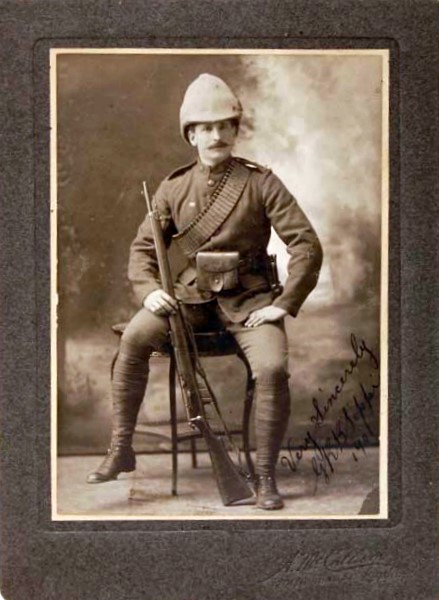Before the First World War

George Roderick Beethoven Sippi, posing in uniform, 1901. RMHCL
As industrialization progressed, individuals began to experience symptoms of nervous disorders with increasing frequency. Prior to the First World War, people exhibited symptoms of traumatic neurosis, later known as shell shock, and currently recognized as post-traumatic stress disorder. These symptoms included a temporary loss of speech, sight, or hearing, numbness in a limb, and severe anxiety, with no outward signs of physical trauma.
Medics in the American Civil War were among the first to observe and treat the effects of industrialized warfare. Not yet labeled shell shock, traumatic neurosis was treated with the use of isolation, rest and relaxation, and the application of electricity. Given time, it was believed that the body would recharge itself and allow the mental state of the patient to return to normal. When time was not sufficient to cure a limp arm or leg, electricity would be applied to help recharge the area and restore feeling.
Unfortunately the mental health of soldiers in the late 19th century and early 20th century was largely ignored through the Boer War, the Russo-Japanese War, and the Balkans War. As such, the treatment of traumatic neurosis was not further developed.
By the time of the First World War (1914-1918) and the corresponding introduction of the term shell shock, the standard treatment remained a combination of electricity, rest and relaxation, and isolation.
While the development of treatment options lagged, the mechanization of war was amplified by the summer of 1914 with the development of faster, stronger, and more deadly weapons. Total war — for the civilian and the solider — began in 1914, and life in the trench was a combination of boredom and terror; of waiting to attack and be attacked. Many men crumbled under the all-consuming artillery barrages that assaulted both body and mind.